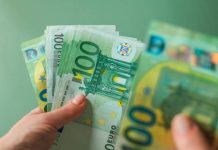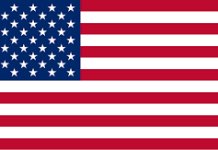President Donald Trump secured his first revamp of a U.S. trade deal, after reaching an agreement this week with South Korea that would allow American automakers greater access to that country’s markets, senior administration officials said on Tuesday night.
According to Bloomberg, the agreement came as the U.S. has been involved in renegotiating the North American Free Trade Agreement with Canada and Mexico and has imposed tariffs that have roiled financial markets.
Seoul has agreed to double to 50,000 the number of cars each U.S. automaker can sell in the Asian nation without meeting local safety standards, said the officials, who briefed reporters on condition of anonymity. However, it’s not clear how the higher cap will immediately benefit American manufacturers, given that sales by American automakers currently fall well short of the new limit.
Under the revamped deal, the U.S. will extend a 25% tariff on pickup-truck imports until 2041. The tariff was set to expire in 2021 under the existing trade agreement, which came into force in 2012.
Meanwhile, South Korea agreed to limit its steel exports to the U.S. to about 2.7 million tons of year, in exchange for relief from the 25% tariff Trump announced earlier this month. Many of the details of the revised trade deal and the steel quota were previously disclosed by South Korea.
The deal removes a major economic irritant as the allies prepare for high-stakes meetings on North Korea. Trump and South Korean President Moon Jae-In are planning separate meetings with North Korea’s Kim Jong Un in the coming weeks. Kim made a surprise visit to China this week and met with President Xi Jinping. China’s official news agency said on Thursday that Kim would be willing to give up his nuclear weapons and hold a summit with the U.S.
South Korea also agreed to eliminate non-tariff barriers such as certain environmental testing requirements and recognize U.S. standards on auto parts, according to the senior administration officials.
Currency Side Deal
The U.S. Treasury department is negotiating a side agreement on currency issues with the South Korean government, the officials said. The purpose of the side deal will be to secure Seoul’s commitment to avoid competitive devaluations of its currency and provide more transparency, such as when the nation’s central bank intervenes in foreign-exchange markets, the officials said.
Korea did not announce any such agreement when it briefed media on the revised trade deal on Monday. Officials at South Korea’s finance and trade ministries didn’t respond to several calls and text messages asking for comment on the report.
The agreement is Trump’s first revised trade pact since taking office. Trump has slammed existing trade agreements with several countries, regularly singling out the 6-year-old trade deal with South Korea, known as Korus.
The steel quota is unlikely to hurt South Korea’s exports since sales to the U.S. account for 11% of total overseas shipments of the metal, the South Korean ministry said. The quota is set at 70% of the average of steel sales to the U.S. from 2015 through 2017.South Korean Trade Minister Kim Hyun-Chong said the country’s tariff exemption was the first granted by Trump on the country level, and officials were still discussing with the U.S. whether it would be permanent or expire after a time.
South Korea’s trade surplus with the U.S. was about $18 billion last year, down from $23 billion in 2016, according to the Korea International Trade Association. Cars accounted for more than 70% of the value of the surplus.
South Korea was one of several countries that received an initial exemption from broad U.S. tariffs on steel and aluminum last week.














